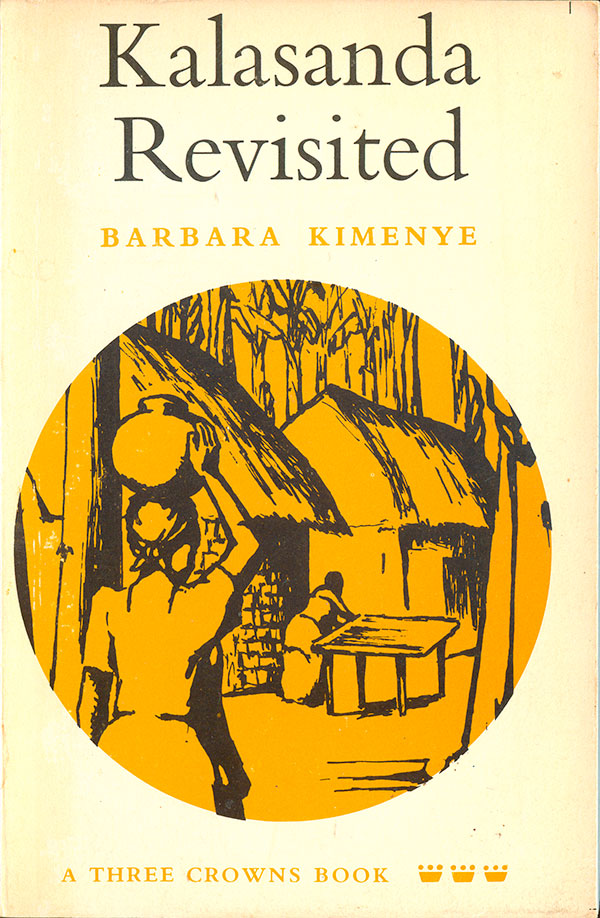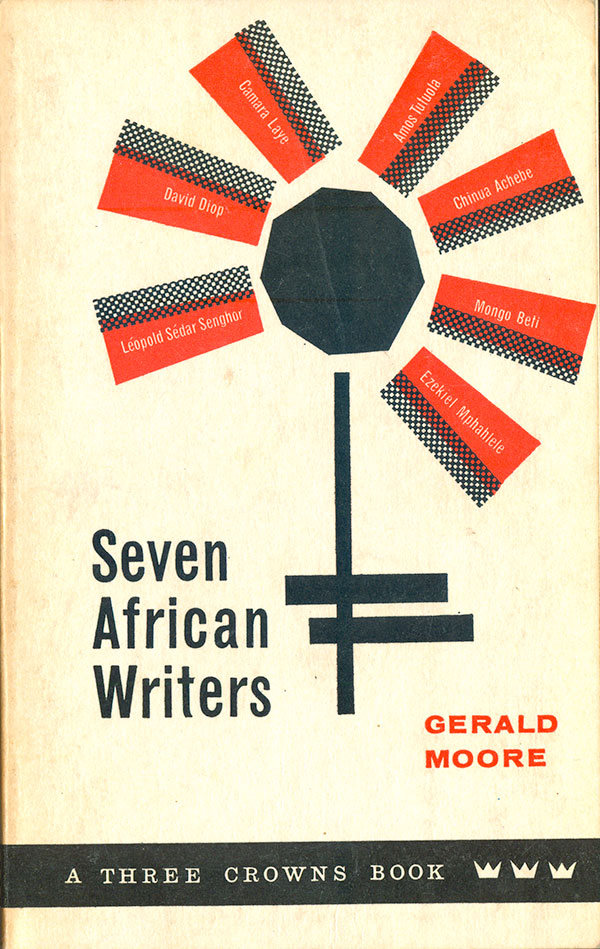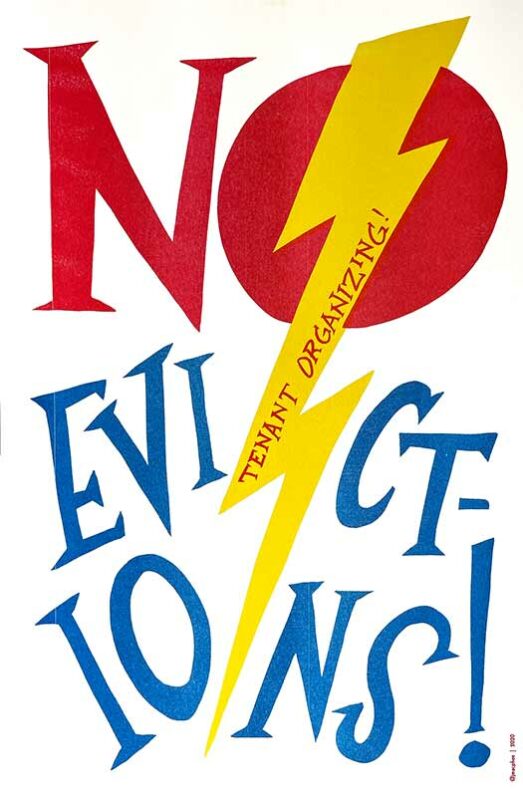There were three major British publishers which began putting out books by African authors in the late 1950s and early 1960s, especially to the educational book market. The big two are Hienemann and Longman, and their African Writers’ Series’. The other was Oxford University Press, and their Three Crowns Books imprint. There is little I can find about the history of the press, but the output of the imprint seems split between authors from African and South Asia. I’m going to focus on the African authors here.
The earliest book I found is from 1962, a survey and assessment of then contemporary African writing by Gerald Moore. The cover design (unattributed) is interesting, a series of shapes that reflect the modernist print strategy of using type blocks and spacers to create visual imagery. But it isn’t composed as tightly or formally, and the core and petals of the flower are varied, off-center, and inexact. There’s a tension here, between the crispness of European Modernism, and the rawness of African primitive-ism. The cover is striking, but one canread a subtle racism at work here—an implication that African writers are connected to a European tradition, but still potentially inferior.
Although they published much less than Hienemann, Three Crowns still published Wole Soyinka, one of the biggest names in African writing. They appear to have been (and may still be) the near exclusive publisher of his early plays, and most of their other books I’ve found are also play scripts. Three of the four Soyinka books from the 1960s have a very similar graphic style, with wrap-around covers depicting raw, almost riotous, “African” scenes. The imagery on all three coalesces around faces and figures, then collapses into geometrics and flat color fields. A Dance of the Forests and The Lion and the Jewel were both designed by Taj Ahmed, and are character filled landscapes. The cover of Kongi’s Harvest was designed by Jimo Akolo. I believe Akolo was a relatively successful Nigerian painter, and Taj Ahmd was a Afro-Caribbean illustrator.
The color use on all three is bold, lots of saturated yellows and oranges, with dark overprints. I’ve included both the original printing of A Dance of the Forests and a much later edition so that you can see the transition from the much richer overprinting of multiple spot colors on a matte stock to the newer covers printed CMYK on glass.

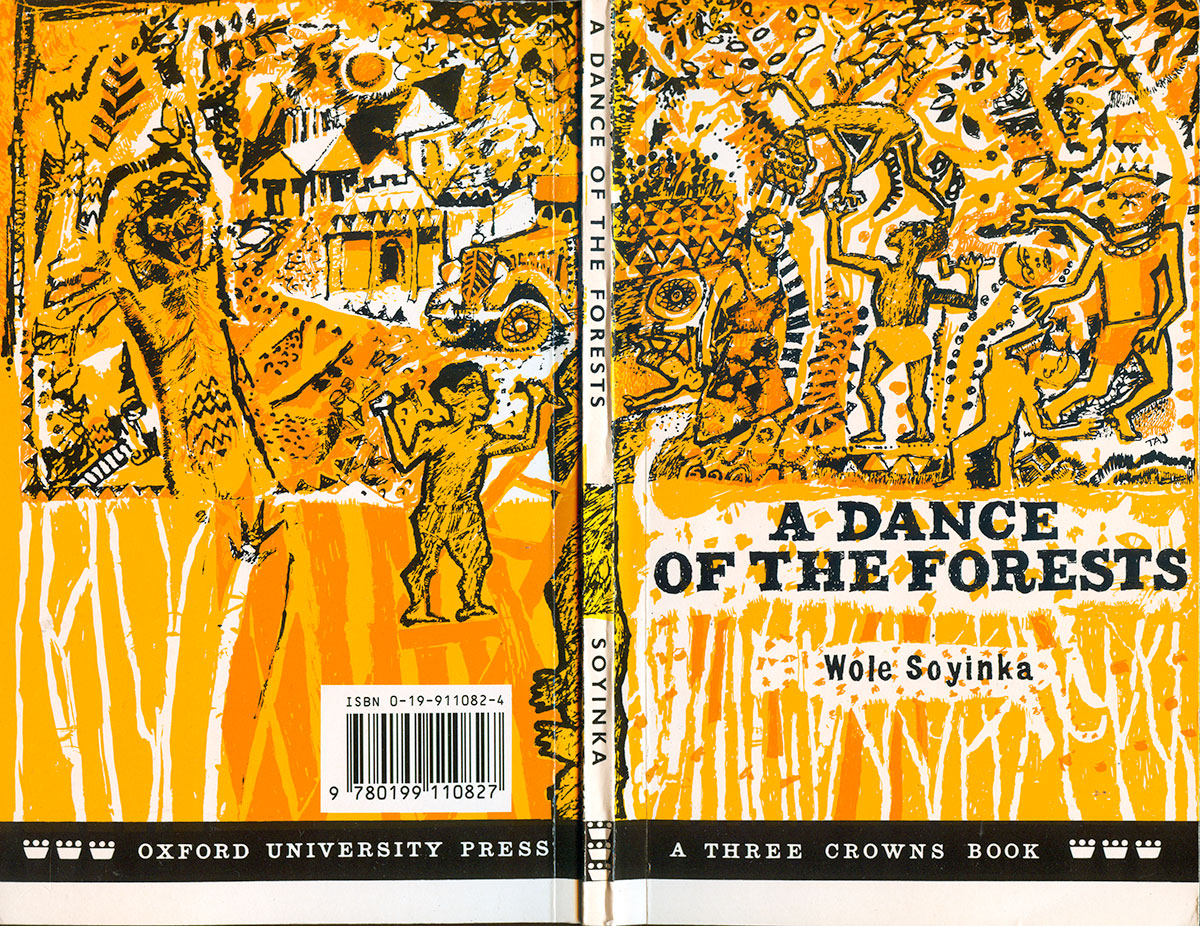
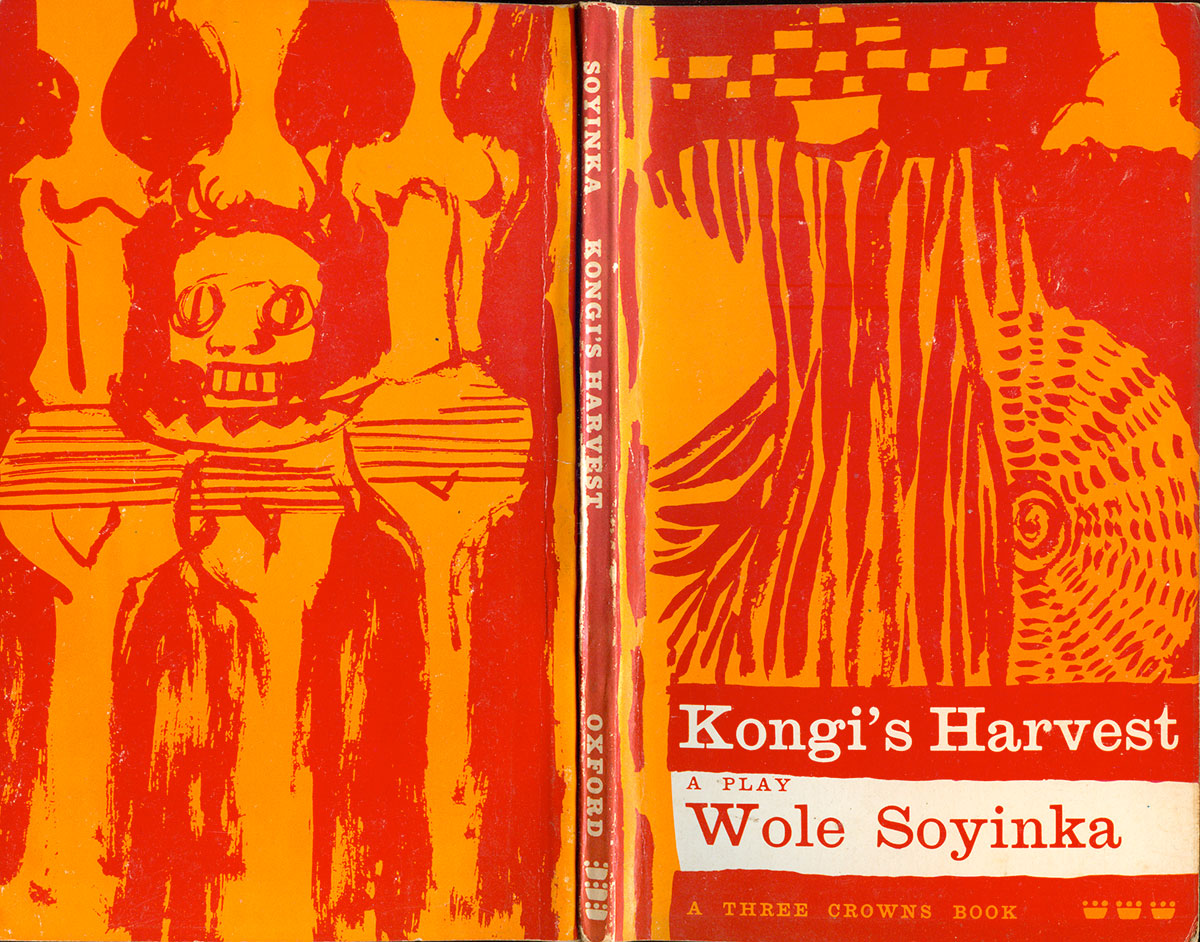
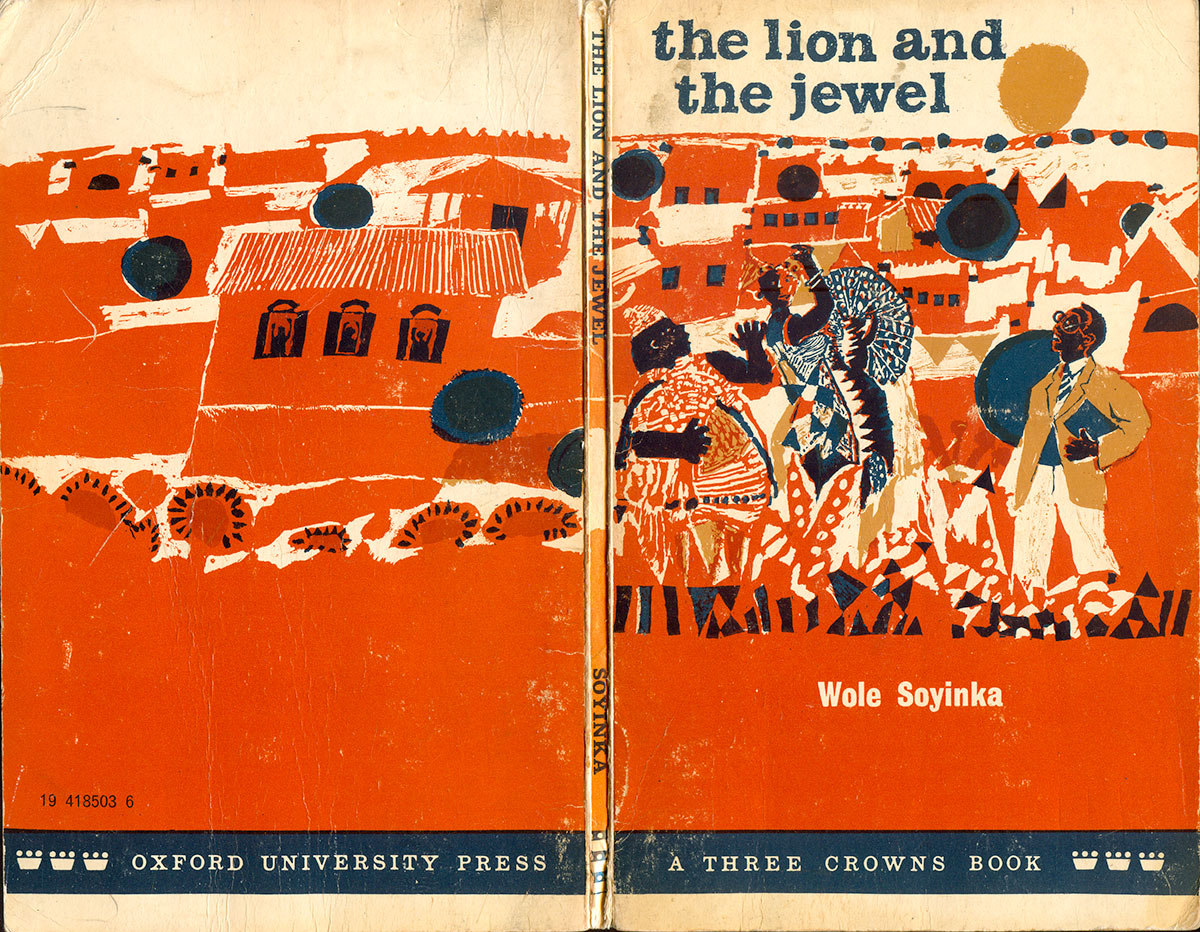
The fourth Soyinka title goes for a different tact with its cover. The Road is graced with a richly printed close-up of a face, blue overprinted on orange to generate a complex field of browns. The face is so close to the viewer that it becomes as much a landscape as an object itself, and the details in the skin start to look like the roads of the title. No designer is listed, and the work has a very different feel than the above covers. There is none of the neo-primitive in the image, that is left to the hand-drawn titling.
Obi Egbuna’s The Anthill has a similar feel, a saturated photograph rendered in duotone, with the titling popping out in negative space. Here the image is of an anthill, but for those of us from parts of the world with small ants that make small anthills, this giant artifice is quite striking and strange. Like the face on the cover of The Road, the contours of the anthill feel map-like, although it’s unclear what they are a map of.

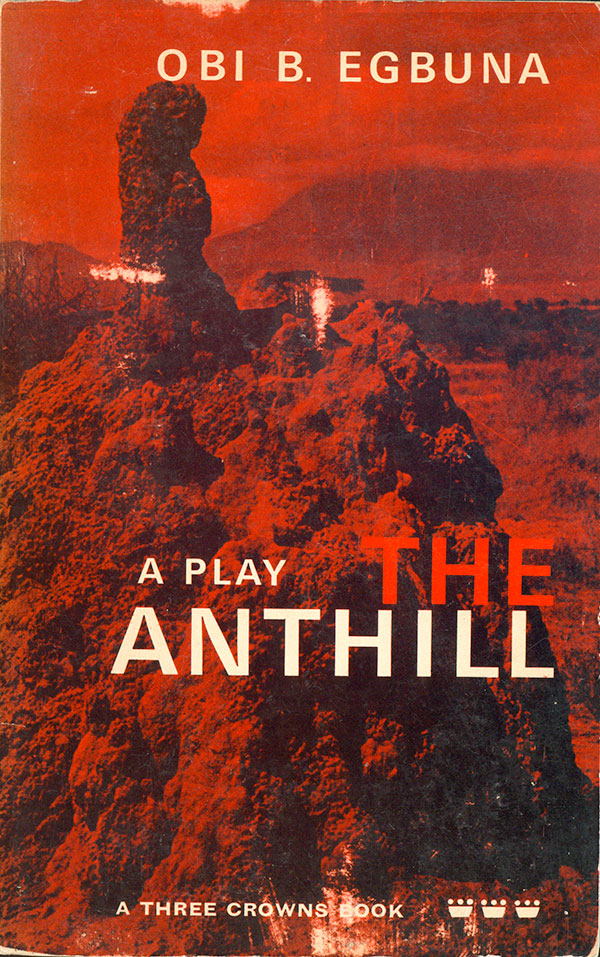
J.P. Clark (or John Pepper Clark) is another Nigerian poet and playwright published by Three Crowns. Like the first three Soyinka books, his covers capture a certain African “primitivism.” It seems a fine line between these covers communicating the spirit of the content and celebrating traditional African aesthetics, or simply stylizing and reifying “African-ness” for a European market. It’s interesting that Dennis Duerden, the designer of Three Plays below, was actually British, and immersed himself in Nigerian and African culture, publishing many articles and books arguing that African art must be understood on its own terms, and not simply as “primitive” or an influence for Western artists to crib from.
Below the Clark titles is the cover of Nigerian playwright and theatre director Ola Rotimi’s The Gods Are Not to Blame. The cover is much simpler than a lot of the others, black with a saturated red photograph of the top of a thatched grass roof/hut. The spiky image is stylized enough to function as both object and abstract texture.
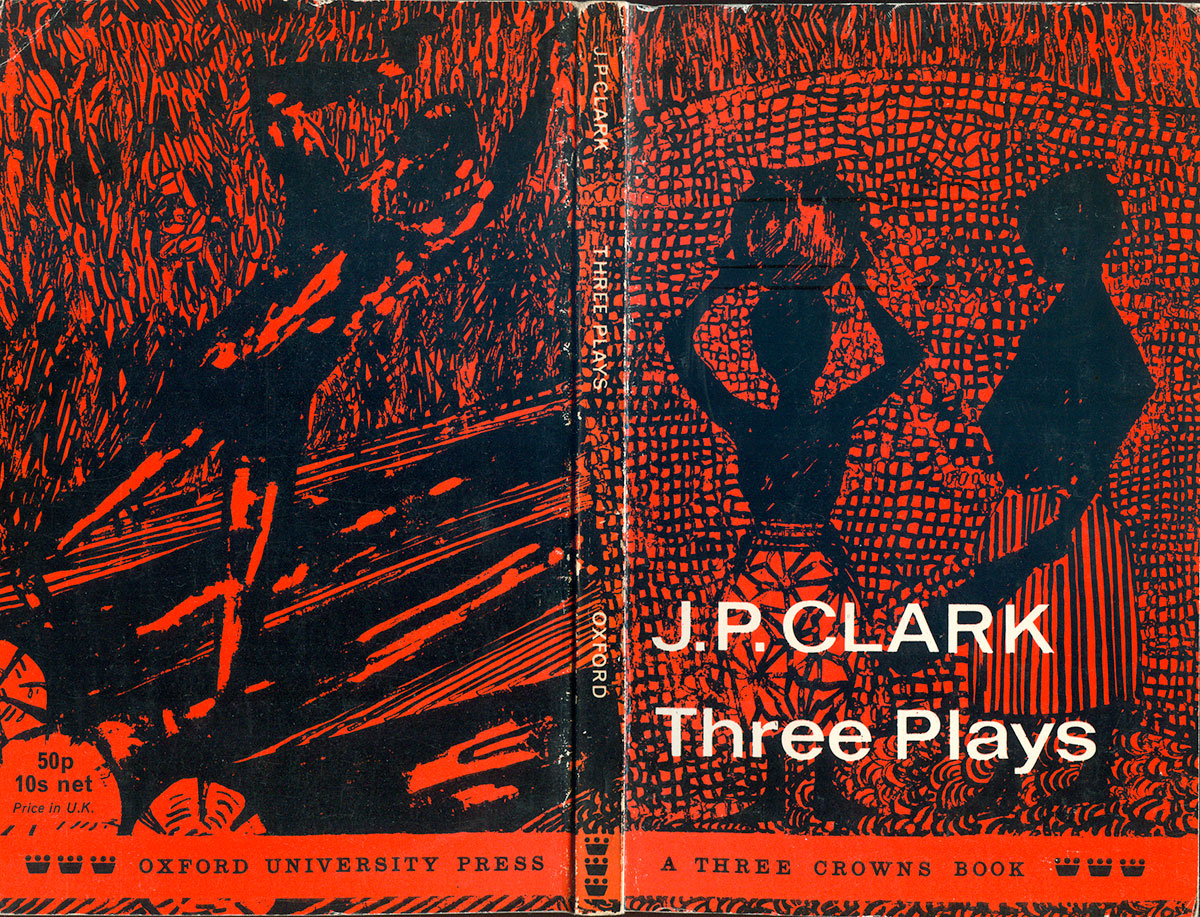
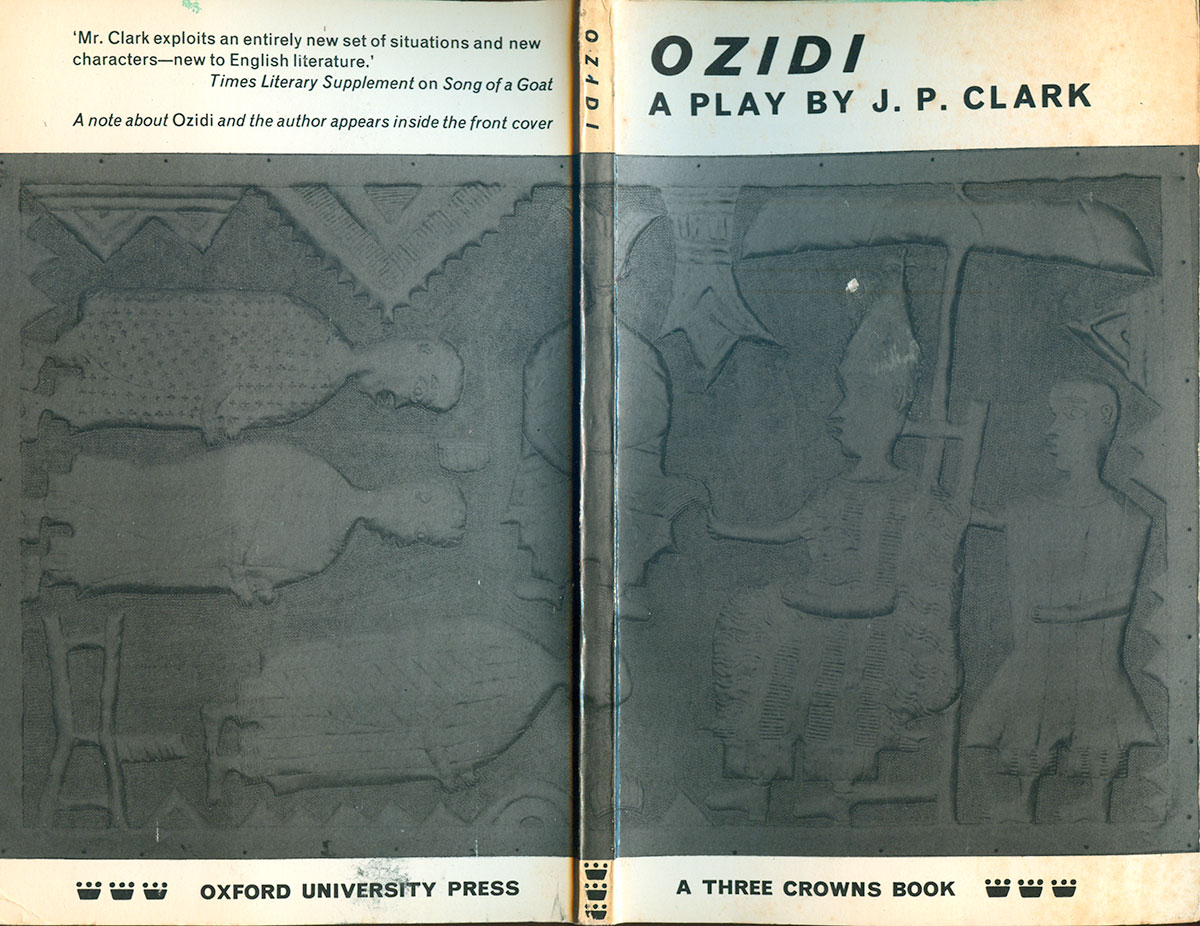
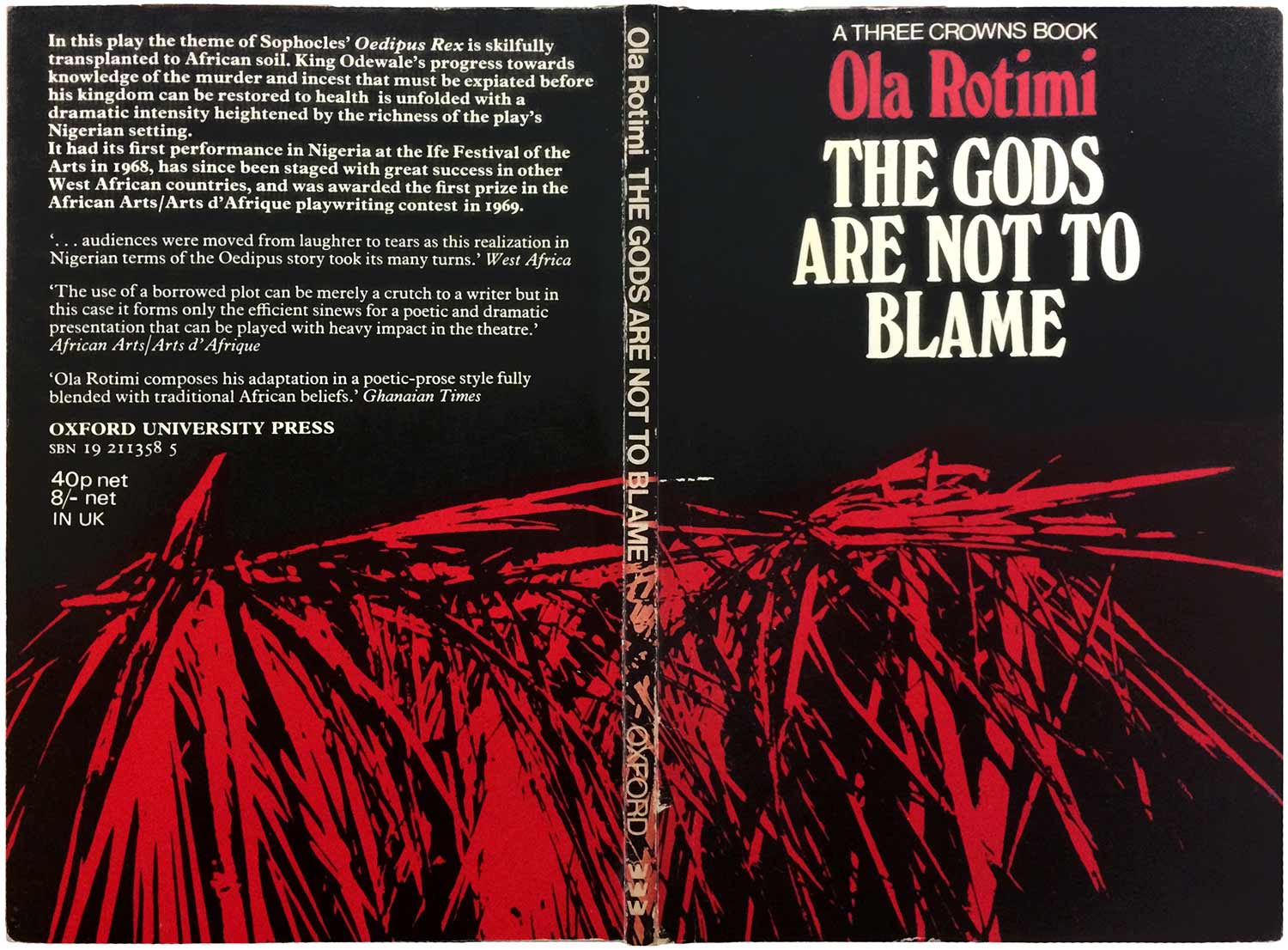
Sadly these Three Crown books are quite hard to come by these days, at least in the U.S., and I’ve only been able to track down eleven (and a sadly have to admit I found a couple of these online…). The last two books are the Kalasanda series by Barbara Kimenye. They are noteworthy because in 1965 there were few women authors being published in English. It wasn’t until 1966 (and the 26th title in the African Writers Series), that Hienemann published their first female author: Flora Nwapa’s Efuru.
The cover of Kalasanda Revisited is an improvement of the first book, with the illustration inset in a circle, and the type in a clear and strong serif. This cover design is also strikingly similar to the series design of East African Publishing House’s Modern African Library, also started in 1966. The Kalasanda illustrations are by N. Kaggwa, but their is no designer attributed. Three Crowns books were printed in the UK, but they had an office in Nairobi, so there might be some unstated cross-over with EAPH.

